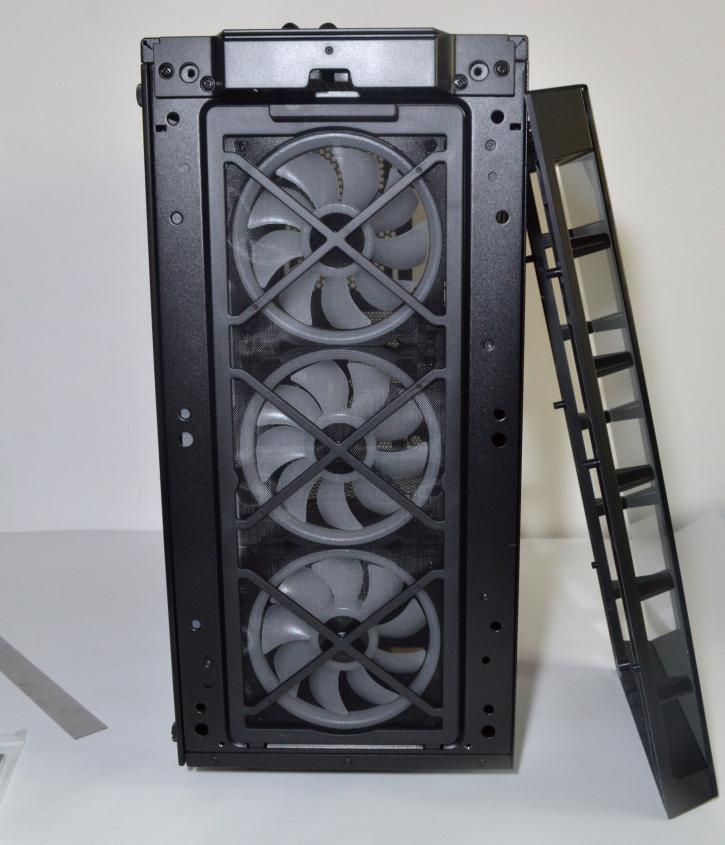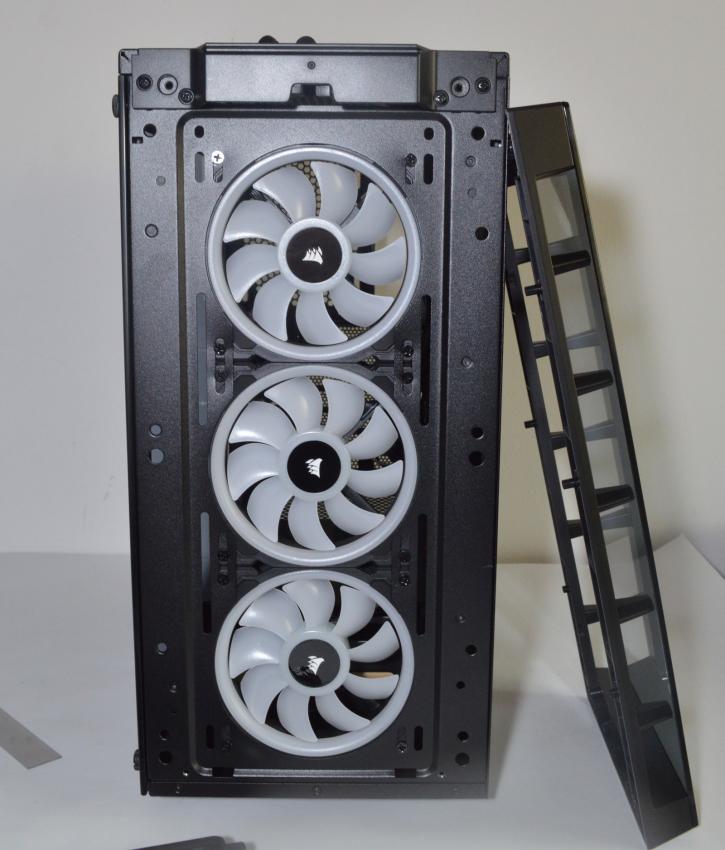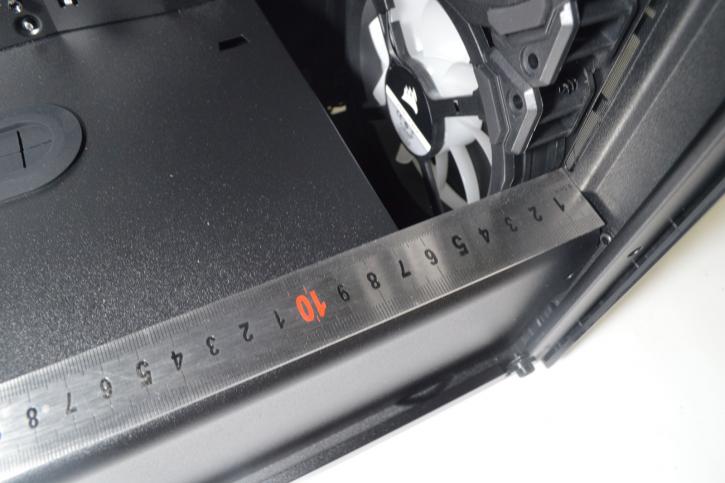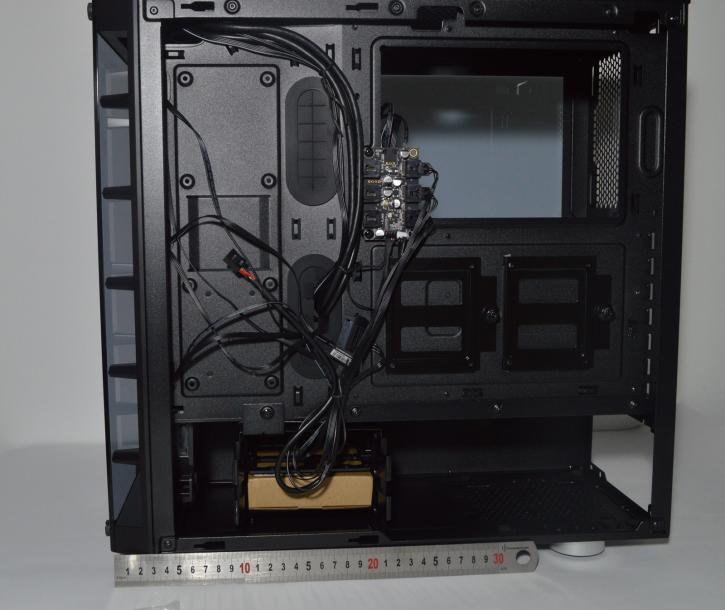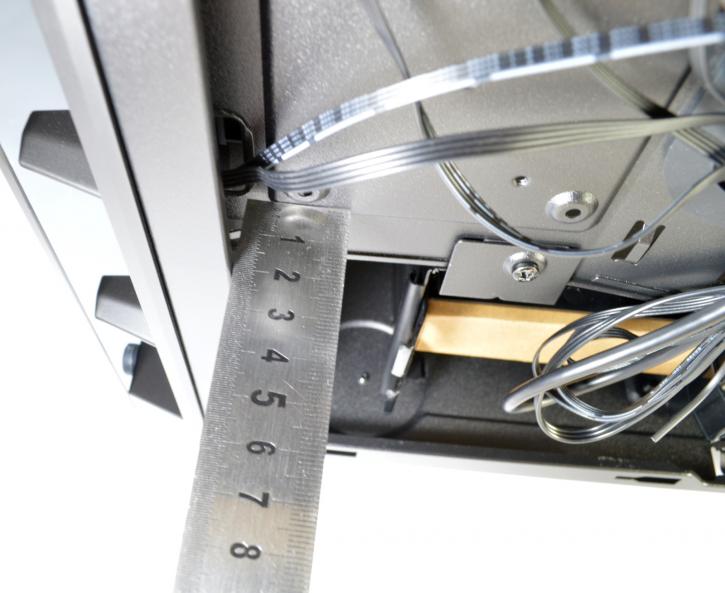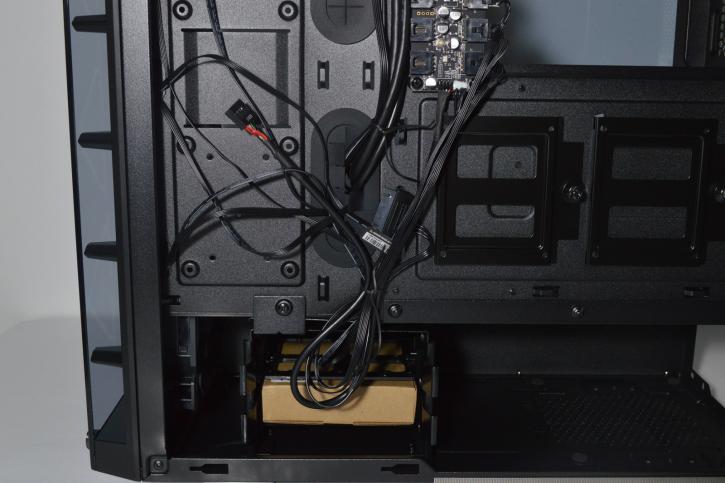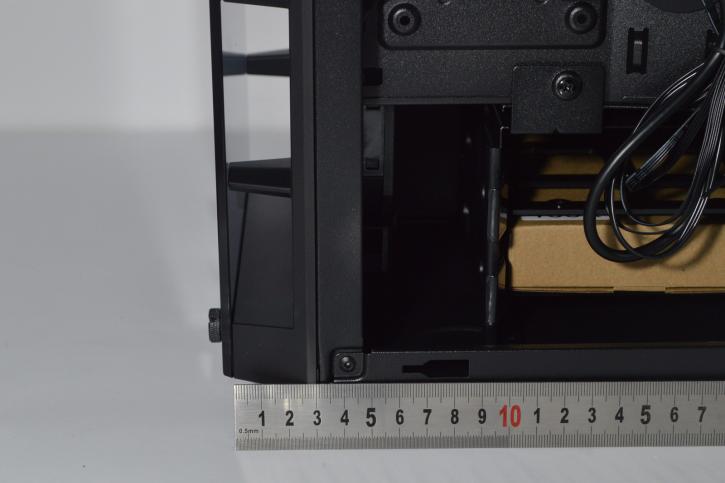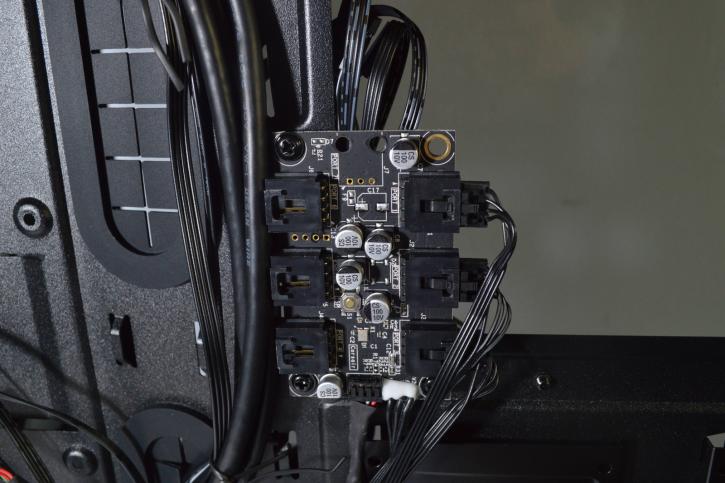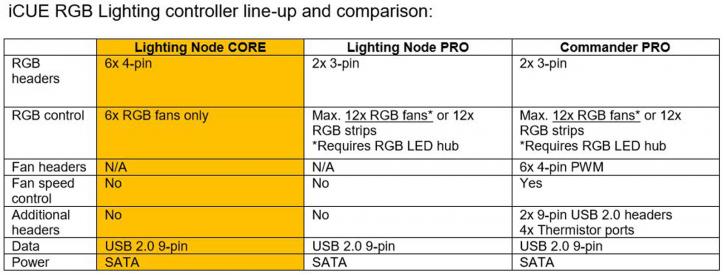Product showcase – interior
Product showcase – interior
The Corsair ICUE 465X RGB is equipped with three 120 mm fans in the front. You can install up to three 120 mm or two 140 mm fans total. This amount of space is sufficient to fit even a 360 mm radiator (according to the manufacturer).
There is also a removable fan filter.
As you can see, the cut-out in the PSU shroud is almost 65 mm across, so you can mount standard AIO radiators (with fans that are typically 25 mm thick) in the front of the case.
The backside of the Corsair chassis is clean, and it should be relatively easy to route all the cables properly in there, especially that the cable pass-throughs with rubber grommets are slightly angled, so you’ll have a bit more space on the backside of this area.
Clearance varies depending on where you measure it. It’s in a range between 15 and 20 mm, and the latter value is reasonable, but not outstanding.
The standard cables include USB 3.0 and front panel connections (with HD audio). The cabling is black, which improves the aesthetics of the whole package.
At the front, you can see that the amount of space available for sucking in air is about 2.5 cm, which should be fine (but we’ll check that later). Last, but not least, the provided fan/RGB controller.
It’s a simplified version of the Corsair Commander controller, and you can check its features below. Connection diagram:
The fans must be connected in a parallel setup (1→6). Otherwise, the lighting effects will not work properly, if at all.
There are two mounting locations in the back of the case, and the device can be easily removed and installed in the other location with the included screws.

